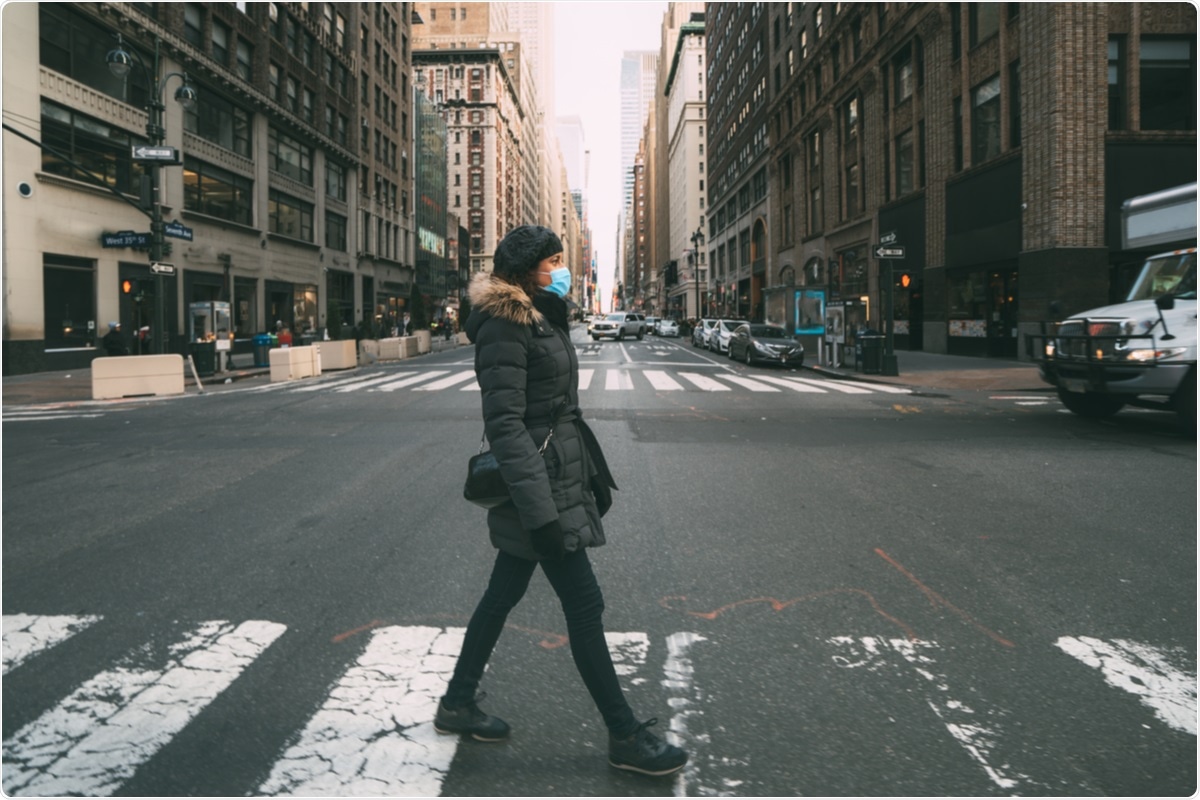The coronavirus disease 2019 (COVID-19) spread rapidly across the globe, leading to over 4.9 million deaths and forcing countries to enact costly measures to curtail the transmission of the disease. The vast majority of offices and public spaces were closed.
 Study: Interactions among common non-SARS-CoV-2 respiratory viruses and influence of the COVID-19 pandemic on their circulation in New York City. Image Credit: Ivan Marc/ Shutterstock
Study: Interactions among common non-SARS-CoV-2 respiratory viruses and influence of the COVID-19 pandemic on their circulation in New York City. Image Credit: Ivan Marc/ Shutterstock
As COVID-19 spreads primarily through droplet transmission, and these droplets are known to be able to travel and remain infective at distances over 1m, all remaining active public spaces such as shops enforced social distancing – keeping people at a 2m distance wherever possible.
Many countries enforced mask-wearing in public places. When the disease was at its peak, lockdowns and stay-at-home orders became common. These proved very effective against COVID-19, and some studies have begun to show the effect these behavioral changes have had against other respiratory viruses.
Researchers from Columbia University have been investigating the impact of the pandemic on the spread of non-coronavirus respiratory viral infections in New York.
A preprint version of the group's study is available on the medRxiv* server while the article undergoes peer review.
The study
Studies have already explored the interference pandemics can show against other respiratory viruses. For example, the 2009 H1N1 pandemic in Israel delayed the seasonal peak of respiratory syncytial virus (RSV) infection. However, the mechanisms by which this interference occurs is a matter of debate: it could be due to competition within hosts, host behavioral changes, or population-level interactions.
The researchers analyzed data for seven groups of respiratory viruses in New York before and during the COVID-19 pandemic. They used elastic net regression, a regularized regression method, to identify interactions among the viruses. Then, they built Auto Regressive Integrated Moving Average (ARIMA) models and compared their performance to examine the robustness of the interactions. These models are generalizations of autoregressive moving average models fitted to time series data, normally to predict future points in the series. Still, they can also allow a better understanding of the data.
The researchers gathered data from laboratories in New York that tested for adenovirus (Adv), coronavirus (CoV), human metapneumovirus (HMPV), rhinovirus (RV), parainfluenza (PIV), RSV, and influenza virus (IV). This included number of requested and positive tests in a given week of 2015 and 2021. The ratio of infections was adjusted based on the time of year of testing.
In total, the researchers fitted 500 elastic net regressions with 10-fold cross-validation and pooled all of these interactions that showed in more than half of the runs. Thirteen models were developed, one for each subtype and virus. The ARIMA models were determined to be accurate if they fit into a 95% prediction interval. Before COVID-19, influenza viruses were the most commonly detected, followed by RV, CoV, and RSV. The rest of the viruses remained low, around 40-60 cases per week at most. Several common patterns were detected, such as the expected outbreaks in winter and seasonal RV outbreaks. The elastic net regressions did identify associations between these viruses, but the significance and power of these associations were generally too low to form conclusions.
As expected, all of the respiratory viruses showed lower circulation during the COVID-19 pandemic. The most affected diseases were other coronaviruses, HMPV, PIV-2 and 4, RSV, and IV. The extent to which transmission of these diseases fell was surprising, with the incidence of most diseases falling between 70-90%. Adv and RV were less impacted by the pandemic, with RV showing increased incidence during the summer of 2020. These results are supported by similar studies showing reduced transmission of other respiratory viruses during the pandemic.
Conclusion
The authors highlight the value of their study in helping to inform public health policymakers and healthcare workers. The incidence of other respiratory viruses could make stark differences in the pressure on health services, especially as they have been taxed strongly over the last year by the pandemic.
Of especial concern was the influenza virus. Several new strains have emerged globally, as the annual influenza outbreak is often difficult for the elderly. High levels of influenza transmission at the same time as COVID-19 transmission could have been extremely problematic. The researcher's study can also help target measures to the locations and populations in which they are most required, as the different viruses can lead to different burdens for different groups.
*Important notice
medRxiv publishes preliminary scientific reports that are not peer-reviewed and, therefore, should not be regarded as conclusive, guide clinical practice/health-related behavior, or treated as established information
- Yuan, H. et al., (2021) Interactions among common non-SARS-CoV-2 respiratory viruses and influence of the COVID-19 pandemic on their circulation in New York City. medRxiv. doi: https://doi.org/10.1101/2021.10.14.21264861
Posted in: Medical Science News | Medical Research News | Disease/Infection News
Tags: Adenovirus, Coronavirus, Coronavirus Disease COVID-19, H1N1, Healthcare, Influenza, Pandemic, Public Health, Respiratory, Respiratory Syncytial Virus, Rhinovirus, Virus

Written by
Sam Hancock
Sam completed his MSci in Genetics at the University of Nottingham in 2019, fuelled initially by an interest in genetic ageing. As part of his degree, he also investigated the role of rnh genes in originless replication in archaea.
Source: Read Full Article
